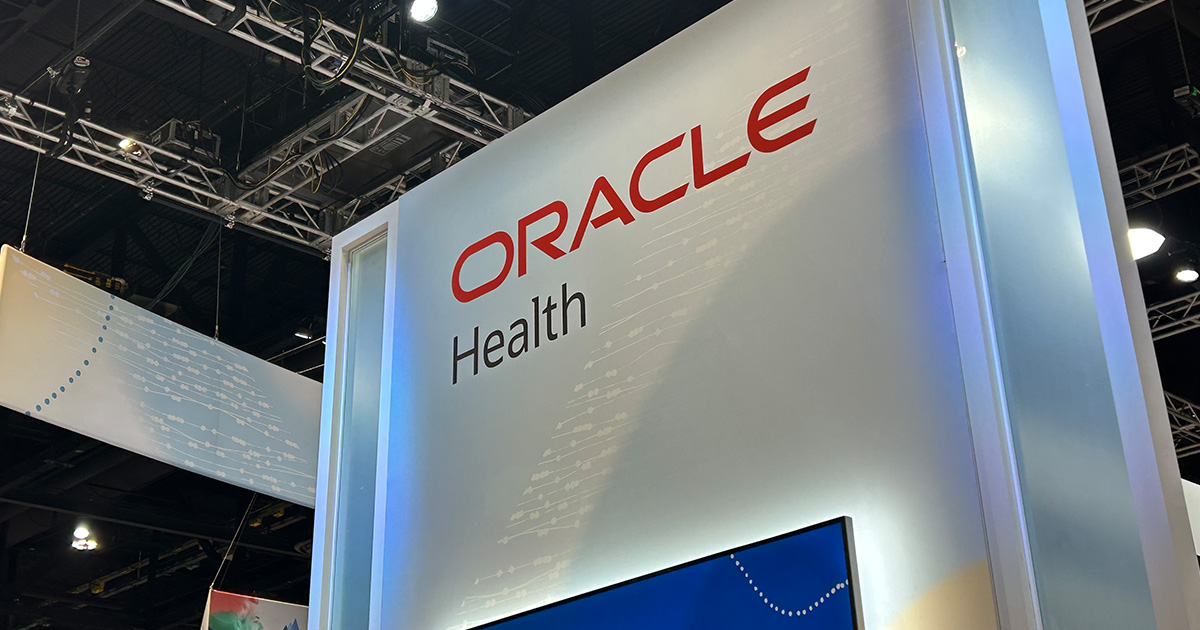Here's the good news: Seventy-seven percent of free-standing physician practices have an ambulatory electronic medical record system installed, and a robust 90 percent of hospital-owned providers are up and running with EMRs.
Compared to where we were just a few short years ago, that's impressive progress.
The not-so-good news? Stage 2 meaningful use numbers still continue to lag expectations. Through Aug. 1, just 1,898 eligible professionals had attested – an elite subset of the 537,600 physicians and practices that have signed up to be for the MU program. Still, at least the momentum is moving in the right direction, however haltingly.
Of those success stories, it's a safe bet that the overwhelming majority are affiliated with hospitals, which offer critical financial, technical and logistical help.
That distinction between hospital-owned and free-standing practices is an interesting one, as illustrated by some data points in HIMSS Analytics' 6th annual "Ambulatory PM & EHR Study," published in August.
Asked about the chief motivators for their ambulatory EMR investments, most providers said meaningful use was a critical catalyst, of course, and cited efficiency (38 percent) and quality (19 percent) as big reasons for their purchases.
"This was particularly true for free standing organizations as almost half with defined purchase plans are relying upon the (EMR) to increase practice efficiencies," according to the report. "Hospital owned facilities tend to be a bit more focused on quality of care and sharing data with other facilities."
Asked by HIMSS Analytics about the barriers to purchasing EMRs, practices of both types report that ARRA helped to defray the biggest – cost – and now the large majority (73 percent) say they don't have plans to buy because they've already got one that's certified for meaningful use.
But 9 percent of providers report that cost is still a prohibitive barrier to implementation – and another 5 percent say they're not willing or able to invest in an EMR because "retirement is right around the corner."
Both tethered and non-tethered practices are making use of certified EHRs, according to the report, and while the top five vendors for both segments include familiar names like Allscripts, Cerner and eClinicalWorks, the biggest slice of the pie for tethered practices belongs to Epic.
Epic serves barely 6 percent of independent providers, however: tops for that market segment is Vitera/Greenway, reflecting a combined client base following those companies' $644 million merger this past November.
And while "the ambulatory market owned by single-hospital systems is clearly skewed towards Epic's favor," the report shows, "the vendor space in the free standing category is relatively fragmented with many smaller and regional players."
That's especially true when when it comes to the specialists, points out HIMSS Analytics Executive Vice President John Hoyt. "Ophthalmology, gastroenterology, all these really special systems. I don't think they're certified. And frankly I don't think they need to be."
(Interestingly, the number of certified ambulatory systems is on the rise; ONC data shows 958 such products as of Feb. 27 – that number had increased to 1,000 by Aug. 22.)
As for the older EMR holdouts, letting meaningful use pass them by as they stick with paper until retirement, who can blame them?
"If I was 58 years old, am I going to spend the money on a system that is certified, when I intend to bail out of here in a few years?" asks Hoyt.
"Or, if I'm a solo practitioner, am I going to enhance my relationship with a healthcare organization that's in my area to help them expand their footprint," adds HIMSS Analytics Senior Director of Research Jennifer Horowitz. "That might give me the opportunity to sell my practice, move toward retirement – and, by the way, use their EMR," in the meantime.
Clearly, that's a path being chosen by more and more independent physicians of all ages.
"The number of practices being owned by an (integrated delivery network) is continuing to grow," says Hoyt.
Still, he says, a slowdown may be beginning. "We sense that on the acute care side: The bulk of the business has occurred."
But that's not to say there's not a market for system replacements. Indeed, that looks to be the next big wave, whether it's hospitals ripping and replacing from the practices they've acquired, or indie providers seeking new solutions because the initial EMRs they'd purchased aren't cutting the mustard in this demanding meaningful use world.
As we reported in late August, a recent KLAS study shows that one of every four outpatient systems is being eyed for replacement.
"Larger practices are seeking to consolidate from multiple EMRs and tighten their relationships with nearby hospitals, while smaller practices are seeking to resolve functionality, support and cost concerns," said KLAS analyst Jared Dowland in a press statement.
"I make a distinction, unofficially, between a holding company and a system," says Hoyt of hospitals that own practices.
"It's a holding company if I've got a whole bunch of practices and they're all running the same thing (they started with)," he explains. "I'm a system if I act like a system: We all have the same information systems and the same medical order sets.
"Hospitals are getting out of the business of being holding companies, because they've just got to drive down their costs," says Hoyt. "They're buying these practices, and if they have an information system, it's getting ripped out."
This past summer saw HIMSS Analytics recognizing a handful of high-achieving providers, those having achieved lofty Stage 7 status on its Ambulatory EMR Adoption Model, or A-EMRAM.

Winners of the Stage 7 Ambulatory Award include 37 ARCare clinics throughout Arkansas and Kentucky, and 131 ambulatory clinics affiliated with TriHealth hospitals, spread across Ohio, Kentucky and Indiana. What are they doing right?
"From the (Stage 7 visits) I've done, they are 100 percent paperless," says Hoyt. "They do not make paper. They inherit paper, of course, because they may get a patient referred to them who comes in the door with a medical record."
Otherwise, theses offices are entirely digital. And how are they making the most of their EMRs?
"The most important thing is that they are building in health maintenance alerts," he says. "And those are the things that are primarily driven off a calendar. 'You're 40 and you're female, you get these. You're 50 and you're male, you get this.' Those kinds of things are being built in. Asthma, teenage protocols are really important – to get the kids to follow the protocols so they don't get themselves in trouble. The high-end, the Stage 7s, are using the system to improve population health."
Hoyt offers two interesting examples:
"One of them is in Northern Minnesota. They, like other organizations realized they had an issue with readmissions of people with congestive heart failure. Weak pulmonary function. Fluid retention. What do you do? You get them to stand on a scale and watch their weight. But what if they don't want to, or they can't afford the medication? Do you know this if you only see them every six months?
"So what they did was give out a couple hundred Bluetooth-enabled scales. They taught them how to use the PHR. It sends their weight to a computer, sends that to a database, and somebody is in there watching a slope. If it goes up by a certain percentage point, bingo, they get a telephone call from case management.
"In a year," says Hoyt, the hospital that owns those providers "cut (its) readmissions of those targeted patients by 42 percent."
In another case, "Miami Children's realized there's a huge problem with obesity," he says. "Their PHR has a really neat function. It allows kids to sign on and join a team where they compete with other teams. They gave out hundreds of Fitbits."
The kids, as kids are wont to do, treated this as a game. They "competed on steps per day – and they reduced obesity 11 percent in 12 months among the targeted population," says Hoyt. "That's what the really good aggressive users of ambulatory EMRs are doing. They're improving population health, and doing it with protocols and gaming technology. I'm happy to see it. They're moving the needle on their own populations."


